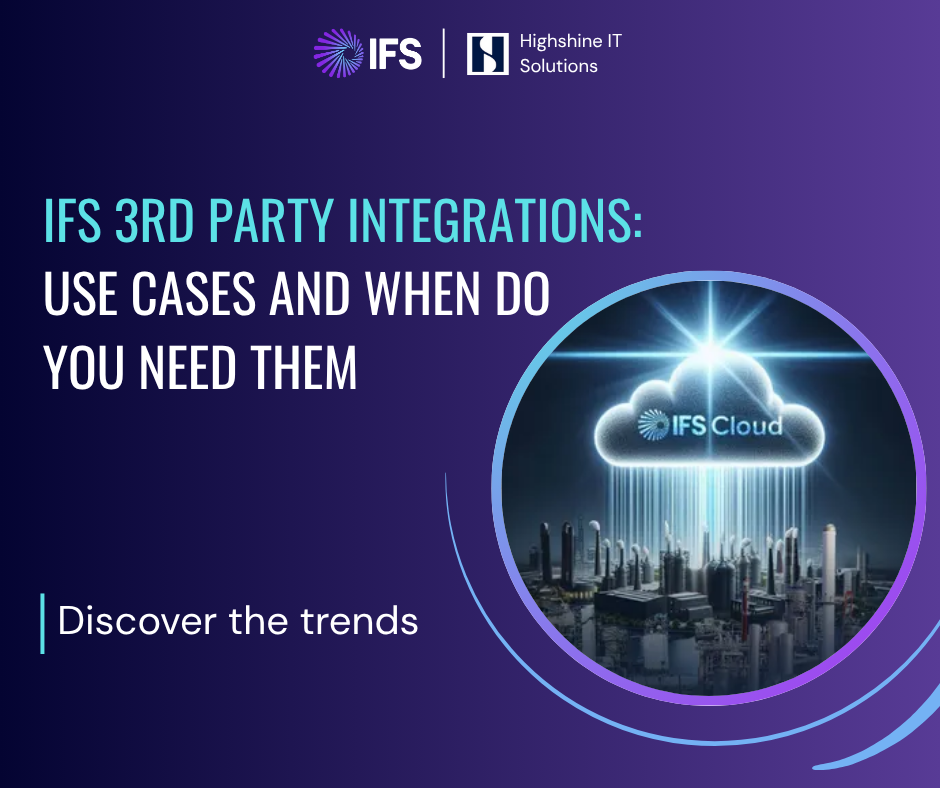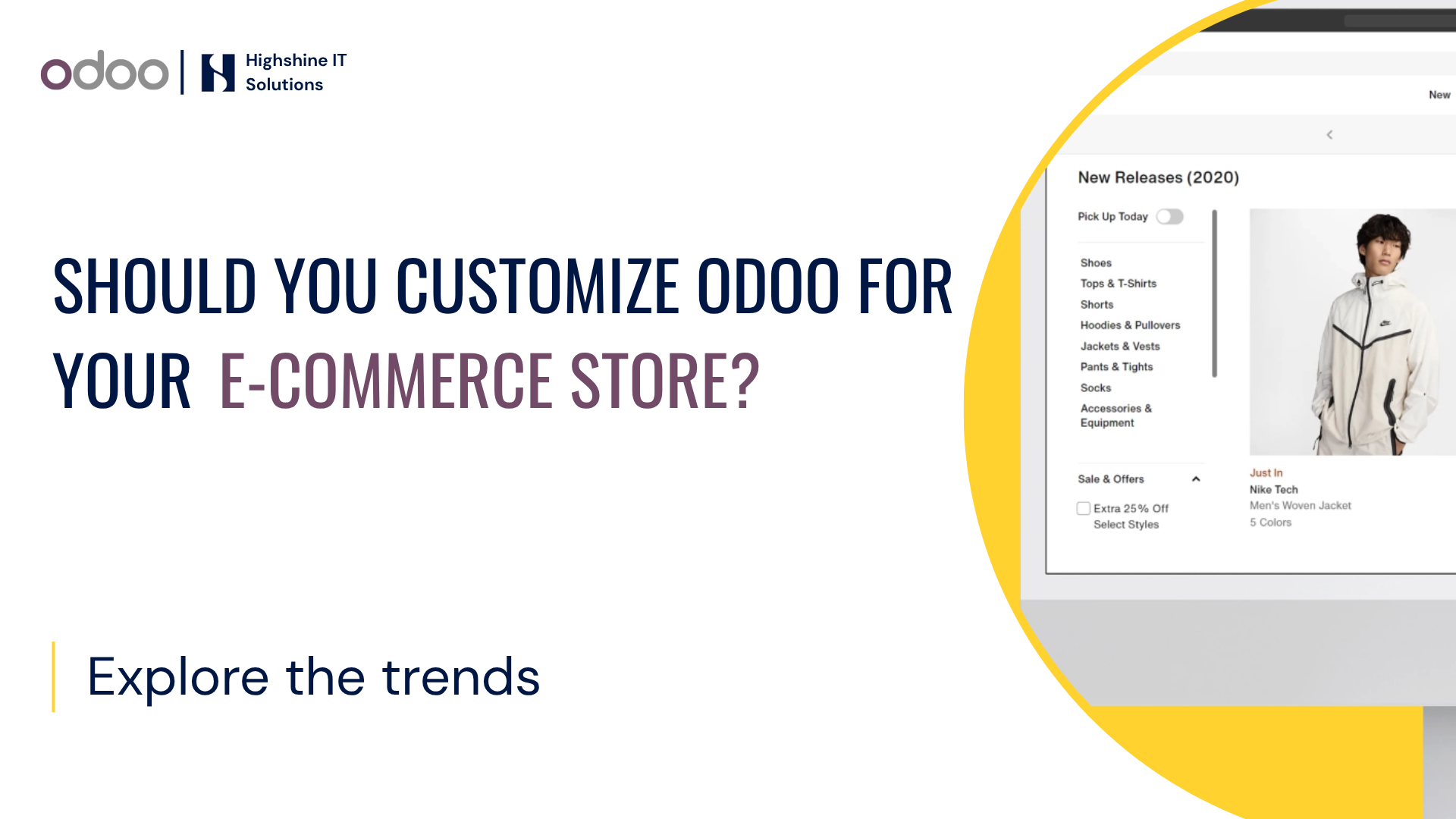
IFS 3rd Party Integrations: Use Cases and When Do You Need Them
Introduction
If you're running a manufacturing operation, managing heavy assets, or coordinating field services, you've probably heard about IFS Cloud - a comprehensive enterprise software suite combining ERP, EAM (Enterprise Asset Management), and FSM (Field Service Management). It's your operational backbone for financials, supply chain, maintenance, HR, and project management.
IFS is powerful, but here's the thing: have you tried filing taxes in three countries using the same system? Or accepting payments through local gateways your customers trust? That's where integration becomes essential.
Sometimes native features don't cover every unique requirement - regional tax compliance, specialized payment methods, or deeper analytics. This article walks you through when and how third-party integrations unlock real value.
IFS Native Capabilities vs. Need for Integration
IFS Cloud's core modules are robust: financial management, supply chain, manufacturing execution, maintenance, HR, project management, and AI-driven analytics. The modular design lets you start small and scale. For many businesses, IFS alone streamlines operations and provides real-time visibility.
But reality kicks in when you expand. Entering India? You need GST e-filing. Selling across US states? Each has different sales tax rules. IFS handles general tax calculations, but automated filing to government portals requires integration.
Consider payments. Indian customers prefer Razorpay or Paytm. European clients want SEPA. US customers expect Stripe or PayPal. Shipping needs carrier integration for real-time rates from DHL, UPS, and FedEx, plus automatic labels and tracking.
Integration means connecting third-party applications through IFS's APIs, middleware like MuleSoft or Dell Boomi, or dedicated connectors. Done right, you get seamless data exchange, unified workflows, and a single source of truth.
Five High-Value Integration Use Cases
Government Tax & Regulatory Portals
Scaling into new markets means dealing with tax authorities in multiple jurisdictions. Filing sales tax in 15 US states with different rates and deadlines, or navigating India's GST e-filing with multiple return forms.
Manual handling invites errors and penalties. Integrate IFS with Avalara for US sales tax or GST Network APIs in India, and tax calculations become automatic, filings go out on time, and you have complete audit trails. The integration uses secure API connections with API management tools, pulling latest rates and submitting filings automatically.
For founders, this means expanding without hiring tax specialists for each location.
Payment Gateways
You've closed a deal, the customer's ready to pay, then they can't use their preferred method. They want UPI in India, but you only accept credit cards.
Integrating gateways like Razorpay, Stripe, or PayPal connects directly to IFS's sales and accounts receivable. When customers pay, status updates in real-time. Finance sees it immediately, reconciliation happens automatically.
Companies cut payment processing from days to minutes. That improved cash flow can mean the difference between making payroll comfortably and scrambling at month-end.
Logistics & Shipping Carriers
Manually checking shipping rates across carriers, choosing options, printing labels, and updating tracking - multiply that by hundreds of daily orders.
Integrate carrier APIs with IFS, and the system automatically calculates rates based on weight, dimensions, and destination. It selects optimal carriers based on your rules. Labels print automatically, tracking numbers flow back into IFS and out to customers.
One client reduced shipping errors by 80% and cut logistics coordination time in half. Customers rated them higher on delivery—not because carriers got faster, but because visibility and accuracy improved.
Specialized HR & Payroll Systems
IFS covers HR and payroll basics. But operating in the US with complex benefits, 401(k) matching, and multi-state tax withholding? Or in India with PF, ESI, professional tax, and state-varying allowances?
Integrating with ADP (US) or GreytHR (India) becomes invaluable. These platforms know every nuance of local labor laws, tax deductions, and compliance. They handle complex calculations, generate required reports, and sync data back into IFS.
This means hiring confidently in new locations without worrying about payroll mistakes.
Advanced Analytics & Dashboarding
IFS has good native dashboards, but founders need to see patterns across the entire business. Correlate sales trends with production capacity, overlay financial performance with customer satisfaction, predict future demand using machine learning.
Integrating Power BI, Tableau, or custom data lakes pulls data from IFS in real-time, combines it with your CRM, website analytics, and support tickets.
One founder discovered their most profitable product line caused the most customer service issues. That insight—combining IFS production data with support tickets—led them to redesign the product and improve both margins and satisfaction.
Three Unique Deep-Dive Scenarios
EDI Integration for Large Retailers
You've landed a contract with Walmart or Sainsbury's. They require EDI (Electronic Data Interchange) for all transactions. They send purchase orders in specific XML or JSON formats and expect invoices and shipping notices back in equally specific formats. Miss a field, and your invoice gets rejected, delaying payment.
IFS Connect, MuleSoft, or Dell Boomi maps and transforms documents between IFS's internal format and the retailer's required format. Purchase orders flow in automatically, convert, and create sales orders. When you ship, IFS generates the shipping notice, middleware transforms it, and sends it automatically.
This means working with major retailers without building a custom integration team. You meet requirements, get paid faster, and scale to additional partners.
IoT-Driven Maintenance
You've got expensive equipment in the field - manufacturing machinery, HVAC systems, or fleet vehicles. Traditional maintenance follows schedules: every 3 months, every 10,000 hours. But what if a critical component fails at 8,000 hours?
Integrate IoT sensors monitoring vibration, temperature, and pressure with IFS Asset Management. These sensors, connected through Azure IoT Hub or AWS IoT, send real-time data via IFS's REST APIs managed through API management platforms. IFS analyzes data, spots anomalies, and automatically creates maintenance work orders before failures happen.
One company reduced unplanned downtime by 60%. Instead of reacting to breakdowns, they're proactively maintaining equipment based on actual condition.
e-Signature Workflows
Current contract process: draft in IFS, export to PDF, email to customer, wait for them to print, sign, scan, and email back. Someone manually files it and updates status. This takes days or weeks.
Integrating DocuSign or Adobe Sign changes everything. Using IFS's event-based API triggers, when a contract reaches approval status, it automatically routes to DocuSign. The customer signs electronically, and the signed contract flows back into IFS automatically.
One services company cut their contract cycle from 12 days to under 2 days. For founders trying to close deals quickly, that speed is a competitive advantage.
Implementation Best Practices & Decision Framework
Which integrations first? Create a 2x2 matrix with technical complexity (low to high) and strategic value (low to high).
Start with high strategic value and low technical complexity—quick wins. Payment gateway integration might be straightforward but delivers immediate value. Complex custom analytics might be high value but also high complexity—tackle that later.
Comprehensive Data Mapping: Before coding, map exactly what data flows where. Which IFS fields correspond to which external system fields? Integrations fail not from technical issues, but because nobody clearly defined what "customer name" meant in each system.
Security and Privacy Compliance: You're moving data between systems, possibly across borders. Understand GDPR, CCPA, and relevant regulations. Ensure data is encrypted in transit and at rest. This protects your business and customers' trust.
Choose the Right Middleware: For simple integrations, IFS's native APIs and API management might suffice. As you scale, consider MuleSoft, Dell Boomi, or IFS Connect. These provide pre-built connectors, transformation capabilities, and monitoring dashboards. They cost money but save multiples in development and maintenance time.
Establish Governance: Implement version control for integration code. Set up separate development, testing, and production environments. Create rollback plans. Monitor integrations continuously to catch issues before they impact operations.
Conclusion
IFS delivers powerful native ERP capabilities handling a huge range of business processes. For many companies, especially early-stage, IFS alone is sufficient. But as you grow, expand into new markets, and face sophisticated customer demands, native functionality won't always be enough.
That's not a weakness—it's reality. No single platform can anticipate every local regulation, specialized tool, or unique business process. IFS's strength is that it's built to integrate, extend, and adapt.
When facing local regulatory demands like multi-jurisdiction tax filing, needing specialized payment and logistics capabilities, or wanting advanced analytics—that's when third-party integration becomes essential.
Start with thorough gap analysis. Identify where IFS native capabilities fall short. Prioritize based on business impact and implementation complexity. Start with a pilot integration that delivers clear value so you can learn and build confidence.
Most importantly: engage experienced IFS partners who've done this before. They know the pitfalls, have pre-built connectors and frameworks, and help you avoid expensive mistakes. The ROI typically pays for itself in the first integration.
By strategically extending IFS with the right integrations, you gain agility to respond to market changes, compliance to operate confidently in any jurisdiction, and innovation readiness to adopt new technologies. These are key ingredients for competitive advantage.
Look at your business. Where are the gaps? Where are you manually bridging systems? Those are your integration opportunities. Start there, start small, and build your way to a truly integrated, powerful system that works exactly the way your business needs it to.




